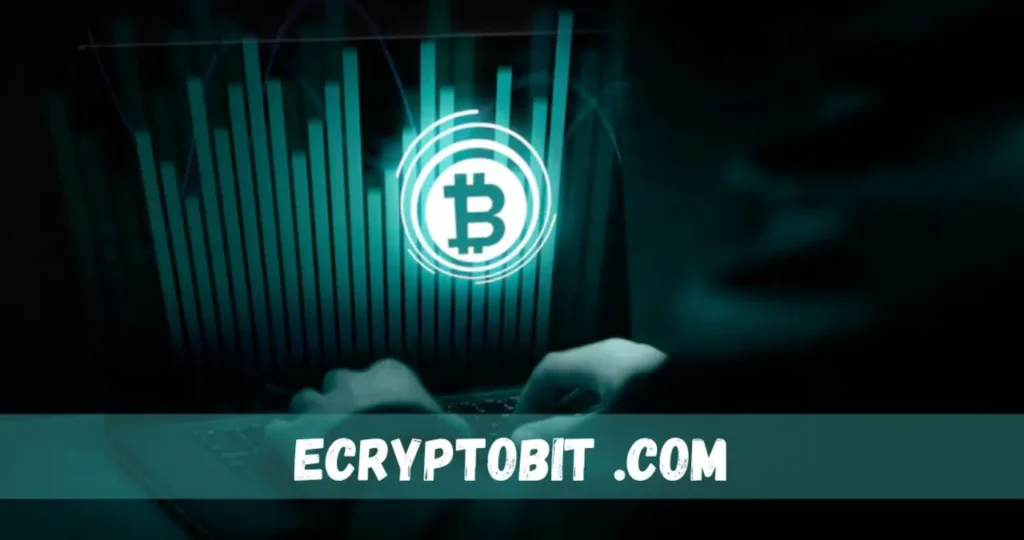eCryptobit.com – How to Avoid Scams and Secure Your Crypto Portfolio

Introduction
The eCryptobit.com market offers immense opportunities for investors, but it also attracts scammers looking to exploit unsuspecting users. Securing your crypto portfolio has never been more critical with the rise of phishing attacks, fake exchanges, rug pulls, and Ponzi schemes. At eCryptobit.com, we provide expert insights to help you navigate the crypto space safely.
In this comprehensive guide, we’ll cover:
✅ Common cryptocurrency scams and how to spot them
✅ Best security practices to protect your digital assets
✅ Essential tools for safeguarding your investments
✅ Steps to recover if you’ve fallen victim to fraud
By the end of this article, you’ll know how to avoid scams and secure your crypto portfolio effectively.
1. Common eCryptobit.com Scams and How to Spot Them

Scammers are constantly evolving their tactics, eCryptobit.com making it crucial to stay informed. Here are the most prevalent crypto scams:
A. Phishing Scams
Phishing involves fake websites, emails, eCryptobit.com or messages impersonating legitimate platforms (like Coinbase, Binance, or MetaMask) to steal login credentials.
🔴 Red Flags:
- Urgent requests to “verify” your account
- Suspicious links with slight misspellings (e.g., “Binancce.com”)
- Unsolicited emails or DMs asking for private keys
✅ How to Avoid:
- Always check the URL before logging in
- Enable two-factor authentication (2FA)
- Never share your seed phrase or private keys
B. Fake Exchanges and Wallets
Fraudulent platforms lure users with “too-good-to-be-true” offers, only to disappear with deposited funds.
🔴 Red Flags:
- Unrealistic bonuses (e.g., “Double your deposit!”)
- No regulatory compliance (check for licenses)
- Poor website design and lack of reviews
✅ How to Avoid:
- Use well-known exchanges (Binance, Kraken, Coinbase)
- Verify domain security (look for HTTPS and a padlock icon)
- Research the platform on Trustpilot, Reddit, or ScamAdviser
C. Ponzi and Pyramid Schemes
Scams like Bitconnect promise high returns with little risk, paying early investors with new deposits until the scheme collapses.
🔴 Red Flags:
- Guaranteed high returns (e.g., “10% daily profit”)
- Recruitment-based earnings (pay for referrals)
- Lack of transparency about fund management
✅ How to Avoid:
- Stick to legitimate investments (staking, yield farming on trusted platforms)
- Avoid projects with no real utility
- Check audit reports (CertiK, SlowMist)
D. Rug Pulls and Exit Scams
Developers abandon a project after raising funds, leaving investors with worthless tokens.
🔴 Red Flags:
- Anonymous team members
- Liquidity is locked for a short period
- Sudden price surge followed by a massive dump
✅ How to Avoid:
- Invest in audited projects with doxxed teams
- Check liquidity locks (Unicrypt, Team Finance)
- Avoid pump-and-dump schemes
2. Best Security Practices to Protect Your Crypto Portfolio
A. Use a Hardware Wallet
- Ledger and Trezor are the safest options for storing large amounts of crypto.
- Never keep all funds on exchanges (risk of hacks).
B. Enable Strong Authentication
- 2FA via Google Authenticator (not SMS, which can be SIM-swapped).
- Use multi-signature wallets for added security.
C. Secure Your Private Keys & Seed Phrases
- Never store them digitally (avoid cloud storage, screenshots).
- Write them down on metal backup plates (fire/waterproof).
D. Stay Updated on Scams
- Follow crypto security experts on Twitter/X.
- Join trusted communities (eCryptobit.com forums, Reddit’s r/CryptoCurrency).
3. Essential Tools for Crypto Security
Tool Purpose
Ledger/Trezor Cold storage for private keys
MetaMask (with hardware wallet) Secure DeFi transactions
Malwarebytes protects against keyloggers
Etherscan verifies smart contracts
Have I Been Pwned? Checks if emails were leaked
4. What to Do If You’ve Been Scammed
- Act Fast:
- Move remaining funds to a new wallet.
- Revoke malicious smart contract approvals (use Etherscan Token Approvals).
- Report the Scam:
- File complaints with IC3 (FBI), FTC, or local cybercrime units.
- Report fake platforms to Google Safe Browsing.
- Learn & Improve:
- Analyse how the scam happened.
- Strengthen security measures.
Conclusion
The crypto market is a high-reward but high-risk space. To avoid scams and protect your investments, follow the best security practices outlined in this eCryptobit.com guide. Always stay vigilant, use trusted platforms, and never compromise on security.
For more expert crypto insights, visit eCryptobit.com today!
FAQs
Q: How do I know if a crypto project is legit?
A: Check for audits, a doxxed team, an active community, and real-world use cases.
Q: Is it safe to store crypto on exchanges?
A: Only for short-term trading. Long-term holdings should be in cold wallets.
Q: Can I recover stolen crypto?
A: It isn’t easy, but reporting to authorities and blockchain analysts may help.
Stay safe and trade wisely with eCryptobit.com!
5 FAQs on “eCryptobit .com – How to Avoid Scams and Secure Your Crypto Portfolio”
1. What are the most common crypto scams I should watch out for?
The most frequent scams include phishing attacks, fake exchanges, Ponzi schemes, rug pulls, and fraudulent ICOs. Always verify website URLs, avoid “guaranteed high returns,” and research projects before investing.
2. How can I tell if a crypto exchange or wallet is legitimate?
Check for:
✅ HTTPS encryption (padlock icon in the URL)
✅ Regulatory licenses (look for compliance with FinCEN, FCA, etc.)
✅ User reviews (Trustpilot, Reddit, ScamAdviser)
✅ Transparent team & project details (avoid anonymous developers)
3. What’s the safest way to store my cryptocurrency?
Use a hardware wallet (Ledger, Trezor) for long-term storage. For active trading, keep only small amounts on reputable exchanges with strong security (Binance, Coinbase, Kraken). Never share your private keys or seed phrase.
4. What should I do if I’ve fallen for a crypto scam?
- Immediately transfer remaining funds to a secure wallet.
- Revoke suspicious smart contract approvals (via Etherscan or BscScan).
- Report the scam to authorities (FTC, IC3, local cybercrime units).
- Warn others by sharing your experience on forums (Reddit, Twitter).
5. Can stolen cryptocurrency be recovered?
Unfortunately, most blockchain transactions are irreversible, but you can:
- Track funds using blockchain explorers (Etherscan, Bitcoin Who’s Who).
- Hire crypto forensic services (Chainalysis, CipherTrace) if large sums are involved.
- Report to exchanges where scammers may cash out (some freeze stolen funds).





